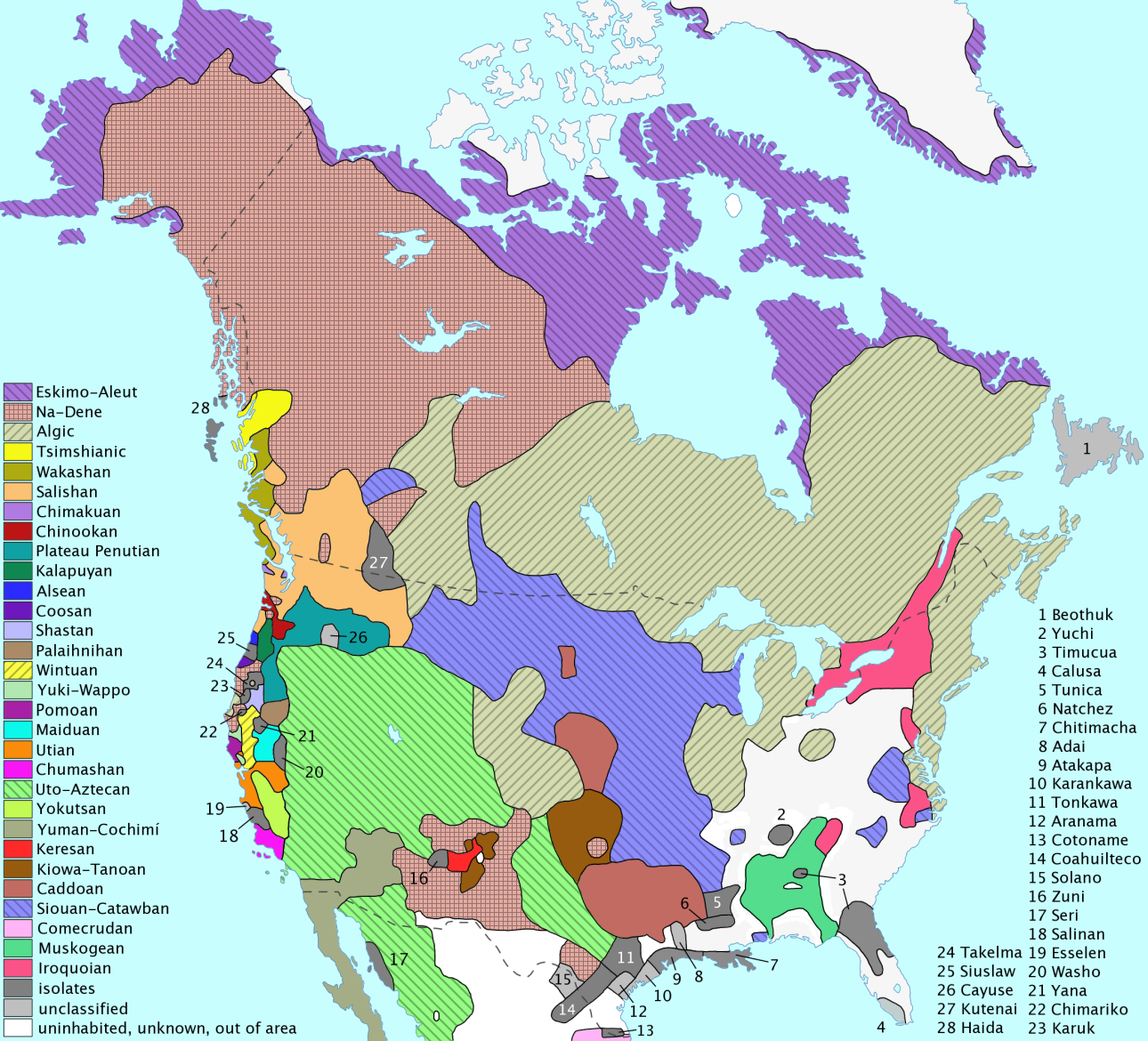The six different cultural areas in Canada included...
-Arctic
-Subarctic (Western and Eastern)
-Plateau
-Great Plains/Prairie
-Northwest coast
-Wood lands or Northeast
Groups that lived in the same geographical areas would of had similar cultural elements, like diets, clothing styles, and housing. Below is a map showing these regions.
Cultural areas of North America Indigenous peoples at the time of European contact (2016) Uploaded by Nikater. Available online at: https://en.wikipedia.org/wiki/First_Nations#/media/File:Nordamerikanische_Kulturareale_en.png
During that time there were approximately 50 major language and 12 distinct language families in Canada, on top of that there were countless different dialects spoken by countless unique tribes. Language families are a group of languages that have evolved from one starting language. Although there were so many dialects, 94% of them are at risk of extinction. "As First Nations traditionally preserved and transmitted their culture and history through the oral tradition, no First Nations language in Canada had a writing system prior to European contact." (Quote from the University of British Colombia). It wasn't until the Europeans came over and taught them how did they start writing. Below is a map of the different language families.
Distribution of language families and isolates north of Mexico at first contact (2016). Uploaded by en:User:ish ishwar. Available online at: https://commons.wikimedia.org/wiki/File:Langs_N.Amer.png
For more visit.
http://www.thecanadianencyclopedia.ca/en/article/aboriginal-people/ (used for first quote)
http://indigenousfoundations.arts.ubc.ca/home/culture/languages.html (used for second quote)
https://en.wikipedia.org/wiki/First_Nations
September.30, 2016








